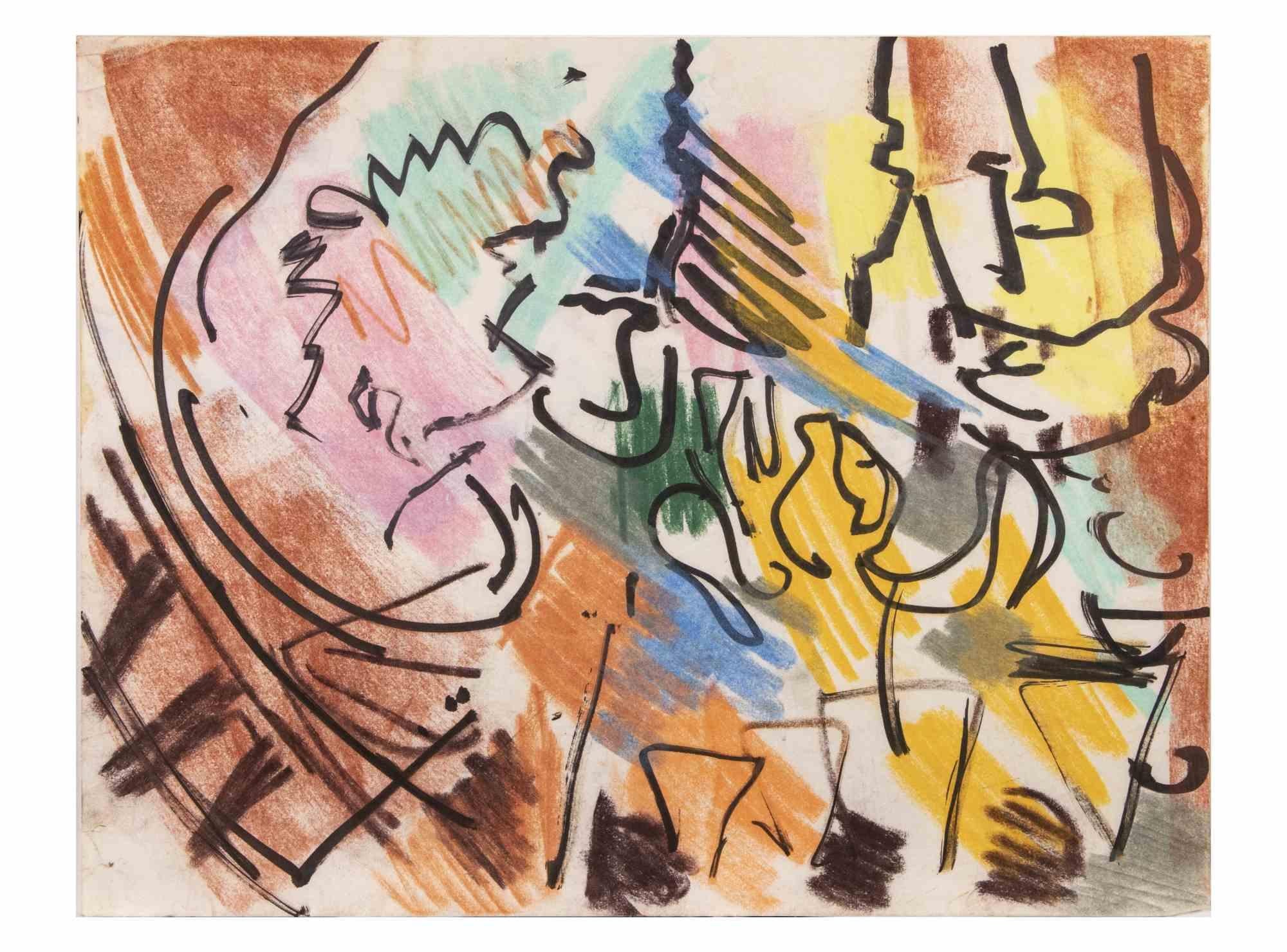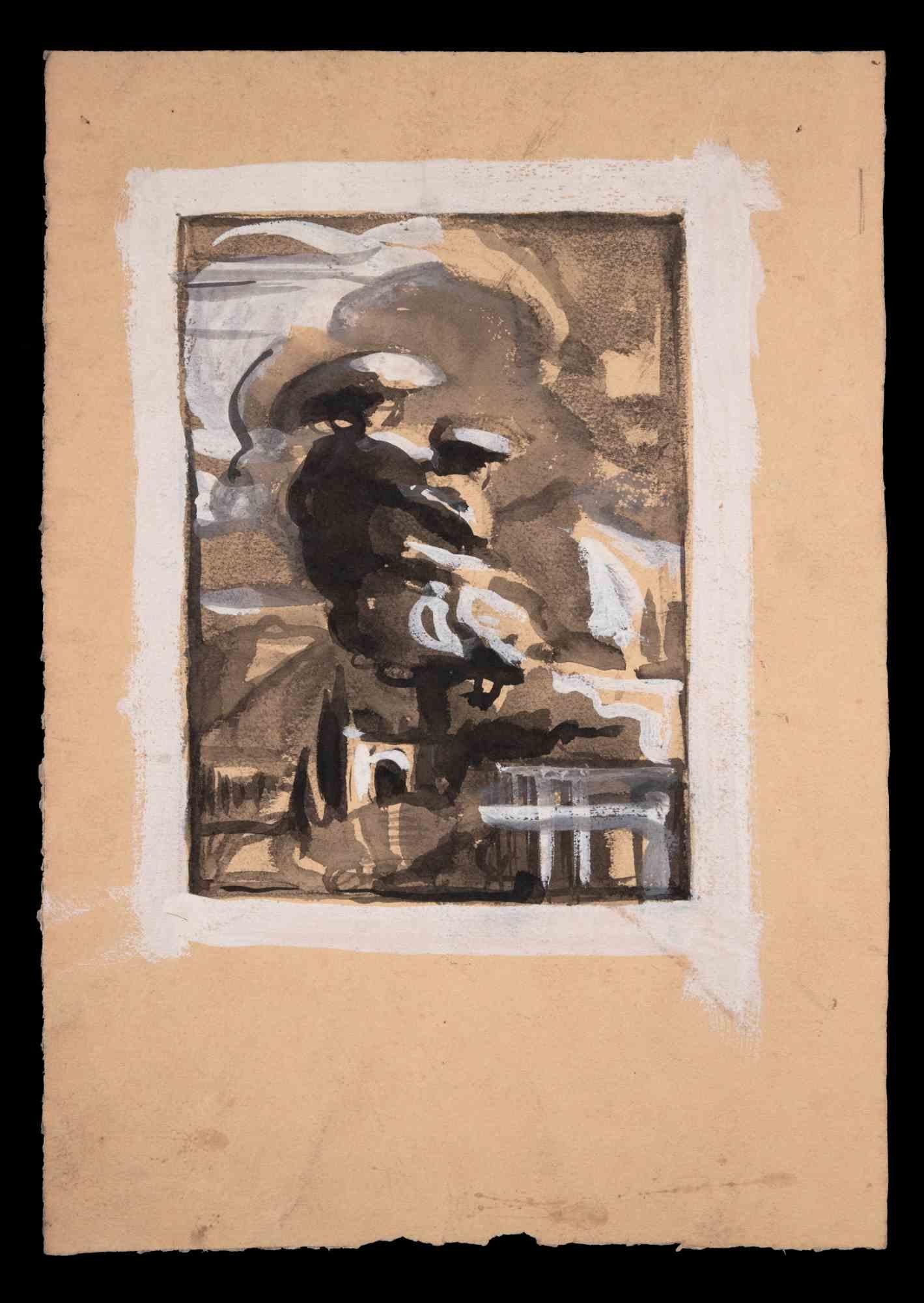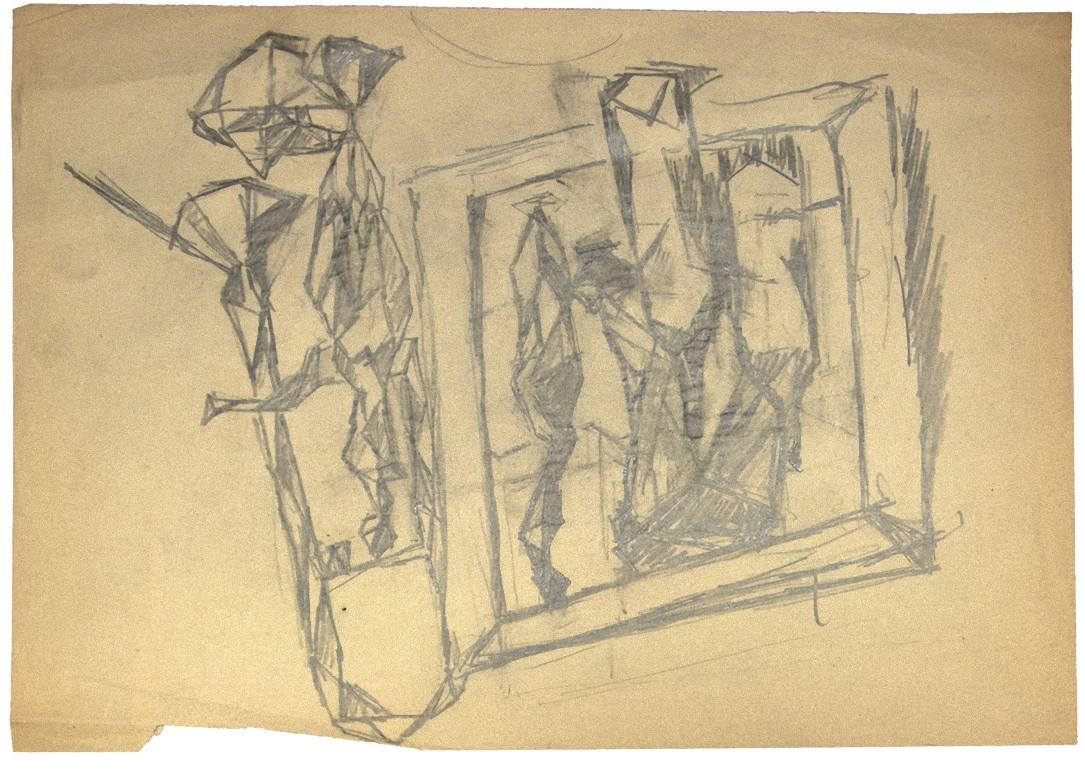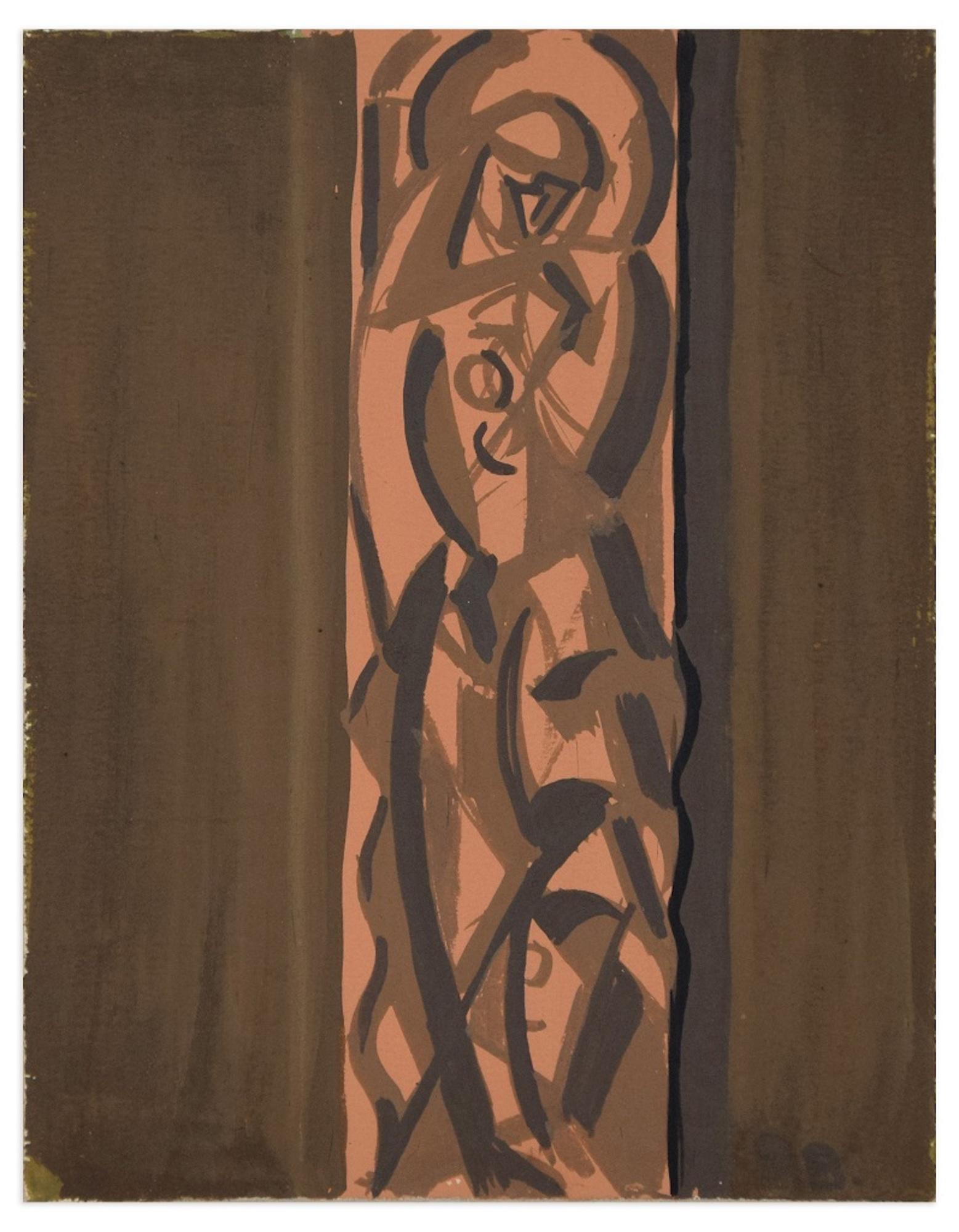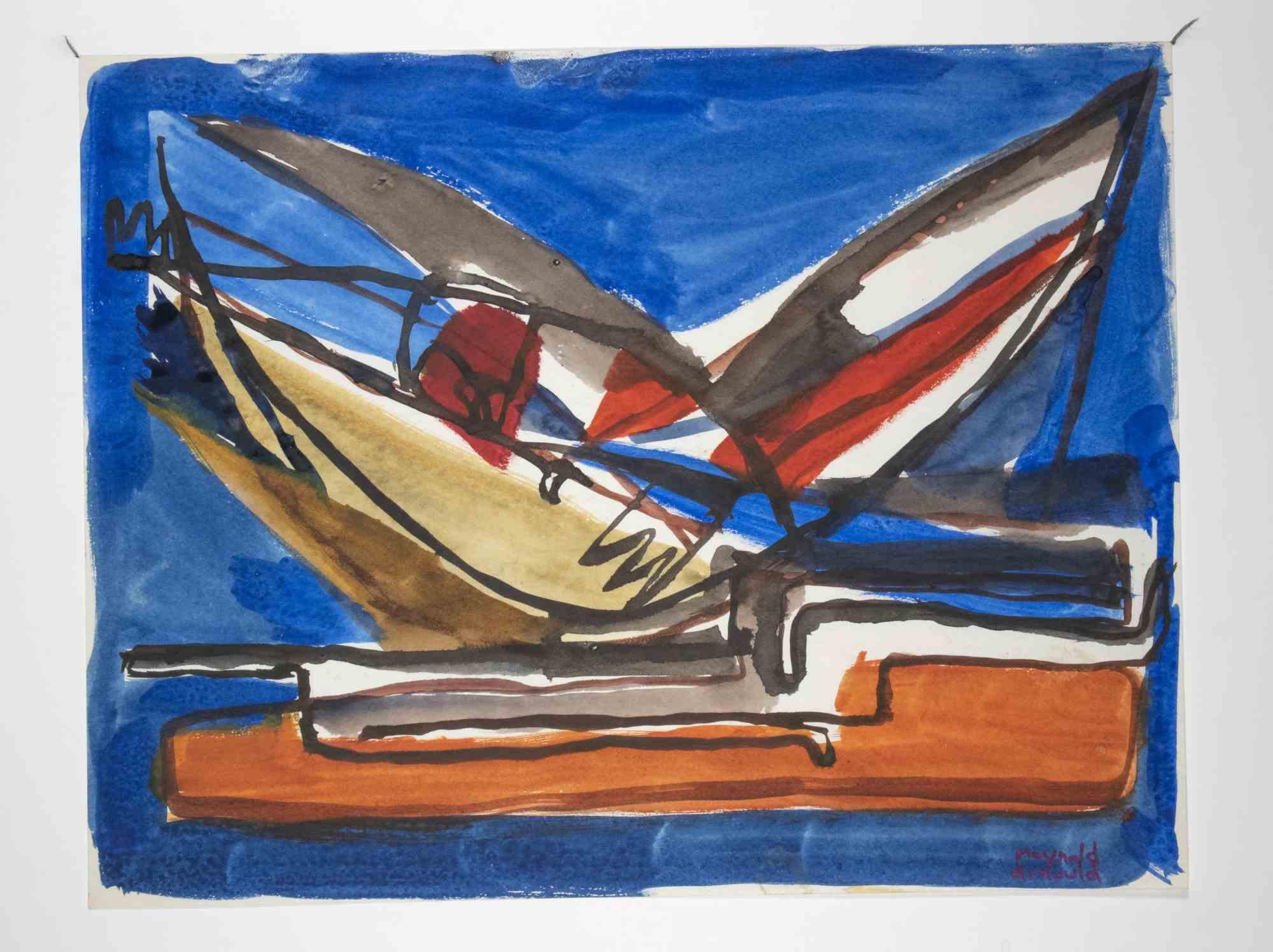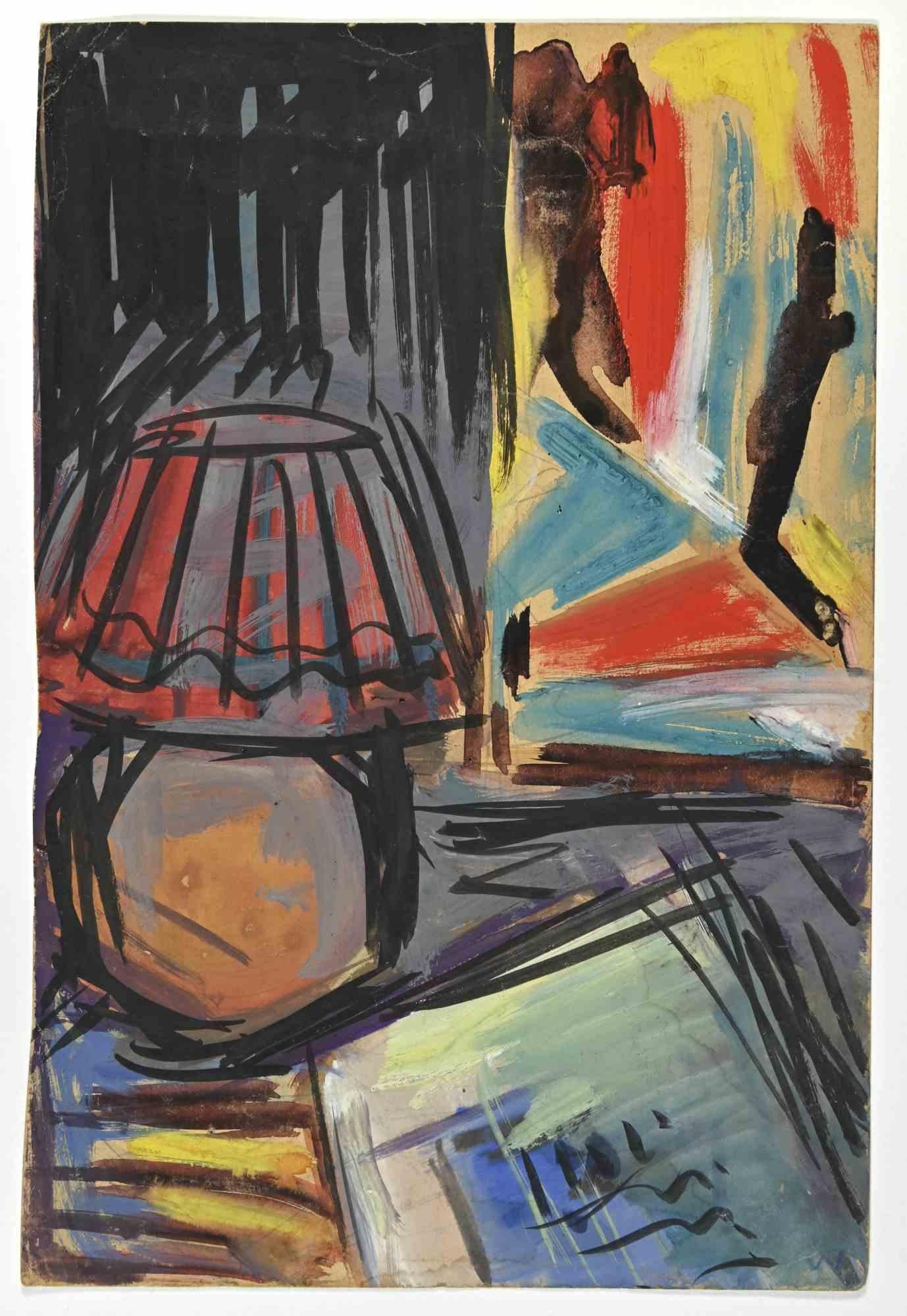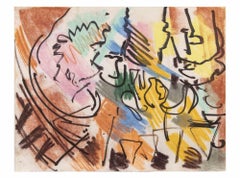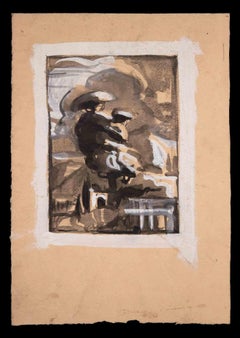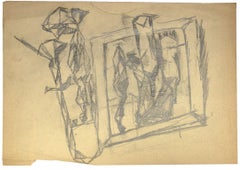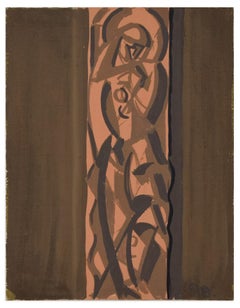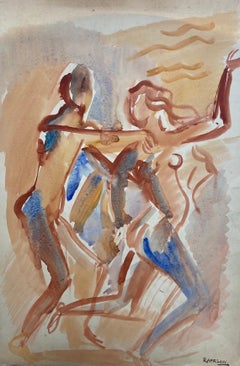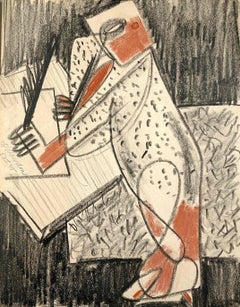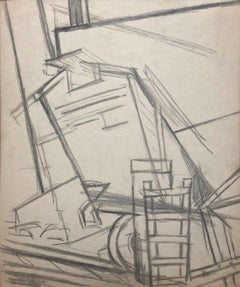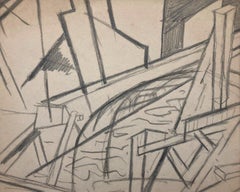Items Similar to Sketch for Frescoed Frieze - Pencil and Gouache by Paul Bony - 1932
Want more images or videos?
Request additional images or videos from the seller
1 of 2
Paul Henry BonySketch for Frescoed Frieze - Pencil and Gouache by Paul Bony - 19321932
1932
$289.21
$413.1530% Off
£217.26
£310.3730% Off
€245
€35030% Off
CA$405.35
CA$579.0830% Off
A$440.29
A$628.9830% Off
CHF 233.10
CHF 332.9930% Off
MX$5,316.20
MX$7,594.5730% Off
NOK 2,909.96
NOK 4,157.0830% Off
SEK 2,756.72
SEK 3,938.1830% Off
DKK 1,865.98
DKK 2,665.6930% Off
About the Item
Sketch for Frescoed Frieze is an interesting preparatory study realized by the artist Paul Bony, a famous French painter active in the last century. The artwork is in good state of preservation. The paper presents some folds and some rips on the right, left, and higher margins. Furthermore, the higher left corner of the paper is missing. The paper presents numerous inscriptions on both sides: above the drawing, barely readable, the writing “frise per ecole maternelle (fregio per scuola materna)”; on the right “H teur: cm80”; on the lower right “frise pour préaux d’Ecole Maternelle/Fresque”.
On the back, there are other inscriptions, probably for the composition of the artwork. In the center, one says “Hommage à de la Tremaye a Paul Verà”, with the signature and date at the bottom “PB [ill.] 1 fevrier 1932”.
The artist Paul Bony was a painter and glassmaker. His wife was Adeline (1917-1998), an artist as well, daughter of Jean Hébert-Stevens and Pauline Peugniez, who placed glass art at the service of figurative art. In 1944, he inherited the company of the parents-in-law. He drew glass windows for sacred places and curated the realization of artistic glass windows for major French artists like Rouault, Matisse, and Chagall. He was an expert landscape painter, focusing especially on the views of Normandy, where he chose to live with his wife.
This preparatory sketch for a frescoed frieze, to realize in the game room of a kindergarten, is very fascinating especially for the subject in Art Deco-Cubist style. Paul Verà, to whom Bony pays homage, is a French painter and a pioneer in the Art Deco style.
- Creator:Paul Henry Bony (1911 - 1982)
- Creation Year:1932
- Dimensions:Height: 7.33 in (18.6 cm)Width: 12.21 in (31 cm)Depth: 0.04 in (1 mm)
- Medium:
- Movement & Style:
- Period:
- Condition:Insurance may be requested by customers as additional service, contact us for more information.
- Gallery Location:Roma, IT
- Reference Number:Seller: M-1025851stDibs: LU65034793201
About the Seller
4.9
Platinum Seller
Premium sellers with a 4.7+ rating and 24-hour response times
1stDibs seller since 2017
7,742 sales on 1stDibs
Typical response time: 2 hours
- ShippingRetrieving quote...Shipping from: Monaco, Monaco
- Return Policy
Authenticity Guarantee
In the unlikely event there’s an issue with an item’s authenticity, contact us within 1 year for a full refund. DetailsMoney-Back Guarantee
If your item is not as described, is damaged in transit, or does not arrive, contact us within 7 days for a full refund. Details24-Hour Cancellation
You have a 24-hour grace period in which to reconsider your purchase, with no questions asked.Vetted Professional Sellers
Our world-class sellers must adhere to strict standards for service and quality, maintaining the integrity of our listings.Price-Match Guarantee
If you find that a seller listed the same item for a lower price elsewhere, we’ll match it.Trusted Global Delivery
Our best-in-class carrier network provides specialized shipping options worldwide, including custom delivery.More From This Seller
View AllAbstract Composition - Drawing By Reynold Arnould - 1970
Located in Roma, IT
Abstract Composition is a Pastel and Color Markers Drawing realized by Reynold Arnould (Le Havre 1919 - Parigi 1980).
Good condition on a white paper.
No signature.
Reynold Arnou...
Category
1970s Modern Abstract Drawings and Watercolors
Materials
Paper, Permanent Marker
Composition - Original Painting by Claude Guez - Mid-20th Century
By Claude Guez
Located in Roma, IT
Composition is an Original Tempera realized by Claude Guez in the early 20th century.
The artwork is in good condition on a yellowed cardboard.
No signa...
Category
Mid-20th Century Modern Figurative Drawings and Watercolors
Materials
Tempera
Figures - Pencil Drawing by Leon Aubert - Early 20th Century
Located in Roma, IT
Figures is a modern drawing in pencil on paper realized by Leon Aubert (1824-1906)
Sheet dimension: 24.5 x 34.5
Good conditions except for a cutaway at the lower margin that doesn'...
Category
Early 20th Century Modern Figurative Drawings and Watercolors
Materials
Pencil
S. Thérèse - Original Tempera by Paul Bony - 1932
By Paul Henry Bony
Located in Roma, IT
S. Thérèse is a small and meaningful artwork realized by Paul Bony, a famous French artist active especially in the middle of the last century. The artwork is painted on branded pape...
Category
1930s Modern Figurative Drawings and Watercolors
Materials
Tempera
$602 Sale Price
25% Off
Abstract Composition - Drawing By Reynold Arnould - 1955
Located in Roma, IT
Abstract Composition is a Watercolor artwork realized by Reynold Arnould (Le Havre 1919 - Parigi 1980) in 1955.
Good condition included a white cardboard passpartout (35x49 cm).
H...
Category
1950s Modern Abstract Drawings and Watercolors
Materials
Paper, Watercolor
Composition - Drawing by Henry Wormser - Mid-20th Century
By Henri Wormser
Located in Roma, IT
Composition is a drawing realized by Henry Wormser in the Mid-20th Century.
Watercolor.
Good conditions with slight foxing.
The artwork is realized through deft expressive strokes.
Category
1950s Modern Figurative Drawings and Watercolors
Materials
Watercolor
You May Also Like
French Cubist Abstract Painting - Picasso influence - Signed
By Roger Herson
Located in Cirencester, Gloucestershire
Stunning original cubist abstract painting by the very well listed French abstract and surrealist artist, Roger Herson (1922-2008). The painting is signed to the lower right corner. ...
Category
Late 20th Century Cubist Abstract Paintings
Materials
Acrylic
$1,031 Sale Price
20% Off
A Dynamic 1945 Mid-Century Modern Cubist Studio Scene, Artist Sketch Class
By Harold Haydon
Located in Chicago, IL
A Dynamic, 1945 Mid-Century Modern Cubist Studio Scene, Artist's Sketch Class by Noted Chicago Painter, Harold Haydon (Am. 1909-1994). Artwork size: 11 x 8 1/2 inches, unframed, mo...
Category
Mid-20th Century Cubist Abstract Drawings and Watercolors
Materials
Paper, Charcoal, Pastel
A Graphite on Paper Mural Study of a Rail Yard by Rudolph Weisenborn, ca. 1940
By Rudolph Weisenborn
Located in Chicago, IL
A graphite on paper, untitled mural study, Cubist scene of a rail yard by important Chicago Modernist artist Rudolph Weisenborn, ca. 1940. Artwork size: 11 3/4" x 9 3/4". Archivally matted to 16" x 18". Provenance: Estate of the artist.
Rudolph Weisenborn was born in Strassburg, Germany in 1881, but was orphaned at the age of nine. He was taken-in by Mid-Western farmer Thomas Westaby and spent his early years in Wisconsin, Iowa and North Dakota. Weisenborn first attended the University of North Dakota in 1898, then the Students School of Art in Denver. Various accounts have him working out west as a gold miner and cowboy.
Around 1912, he settled in Chicago and worked as a window designer for Marshall Field’s. Weisenborn is best known as the founder of the Chicago No-Jury Society of Artists. The group was founded because many artists could not get their work accepted into the mainstream Art Institute shows. Weisenborn is quoted as saying that he harbored feelings of disdain for any jury and that his own paintings were frequently rejected by conservative jurors. He was also involved and helped found other radical artist’s groups such as the Salon des Refuses, Cor Ardens and Neo-Arlimusic. In 1936, he helped found the New York-based American Abstract Artist’s Group. He created the only abstract mural for the 1933 Century of Progress Exhibition in Chicago and also worked for the Federal Arts Project in the Easel Division. His WPA murals can be found in Crane Technical High School and Nettlehorst Elementary School in Chicago, IL. In 1945, Chicago businessman Herman Spertus...
Category
1940s Cubist Abstract Drawings and Watercolors
Materials
Paper, Graphite
A Cubist, Untitled Mural Study of a City Scene by Artist Rudolph Weisenborn
By Rudolph Weisenborn
Located in Chicago, IL
A graphite on paper, untitled mural study, Cubist city scene by important Chicago Modernist artist Rudolph Weisenborn, ca. 1940. Artwork size: 9 3/4" x 11 3/4". Archivally matted to 16" x 18". Provenance: Estate of the artist.
Rudolph Weisenborn was born in Strassburg, Germany in 1881, but was orphaned at the age of nine. He was taken-in by Mid-Western farmer Thomas Westaby and spent his early years in Wisconsin, Iowa and North Dakota. Weisenborn first attended the University of North Dakota in 1898, then the Students School of Art in Denver. Various accounts have him working out west as a gold miner and cowboy.
Around 1912, he settled in Chicago and worked as a window designer for Marshall Field’s. Weisenborn is best known as the founder of the Chicago No-Jury Society of Artists. The group was founded because many artists could not get their work accepted into the mainstream Art Institute shows. Weisenborn is quoted as saying that he harbored feelings of disdain for any jury and that his own paintings were frequently rejected by conservative jurors. He was also involved and helped found other radical artist’s groups such as the Salon des Refuses, Cor Ardens and Neo-Arlimusic. In 1936, he helped found the New York-based American Abstract Artist’s Group. He created the only abstract mural for the 1933 Century of Progress Exhibition in Chicago and also worked for the Federal Arts Project in the Easel Division. His WPA murals can be found in Crane Technical High School and Nettlehorst Elementary School in Chicago, IL. In 1945, Chicago businessman Herman Spertus...
Category
1940s Cubist Abstract Drawings and Watercolors
Materials
Paper, Graphite
Rare Early Israeli Cubist Pencil Pastel Drawing Arieh Leo Lubin 1930's Palestine
Located in Surfside, FL
Arieh (Leo) Lubin, Israeli, 1897-1980
Drawing in pencil and pastel of two seated Arab or Sephardic Jewish figures.
Hand signed in Hebrew upper left.
Dimensions: (Frame) H 18" x W 2...
Category
Mid-20th Century Figurative Drawings and Watercolors
Materials
Pastel, Pencil
Sketch. 1930's, watercolour, pencil on paper, 42x27 cm
Located in Riga, LV
Romans Suta
Born on April 28, 1896 in the vicinity of Cesis (Latvia), died on July 14, 1944 in Tbilisi (Georgia), rehabilitated posthumously.
Painter, graphic artist, decorative and stage designer, art critic and theoretician. Studied at the J. Madernieks' Art Studio (1913), Riga City Art School (1913-1915), and Penza Art School (1915 -1917). A prominent figure and active protagonist of modernist trends in Latvian art. Travels to Berlin and Paris, where he made the acquaintance of A. Ozanfant, Le Corbusier, and others. The influences of Cubism and Constructivism.
A member of the Riga Artists' Group (1920-1924) and the Riga Graphic Artists' Society. Painter of still lifes and figural compositions. After the first experiments in Modernism, he turned to a more realistic manner of representation. The initiator and developer of a national constructive style, especially in interior design; the founder of Baltars creative workshop for porcelain painting (1924-1928); a designer and painter at Kuznetsov...
Category
1930s Modern Figurative Drawings and Watercolors
Materials
Paper, Watercolor, Pencil
More Ways To Browse
Vintage French Windows
Paul Vera
V De Maneer
Vernon Wilson
Vicente De Paredes
Vietnamese Watercolor Paintings
Vintage Fashion Sketches
Vintage Jester Illustration
Vintage Miller High Life
W M Birchall
Walter Dahn
Whitfield Lovell
Woman Silhouette Painting
Zygmunt Menkes
50s Nude Woman Painting
Aaron Curry
Alberto Rosati
Alexandra Antiques
